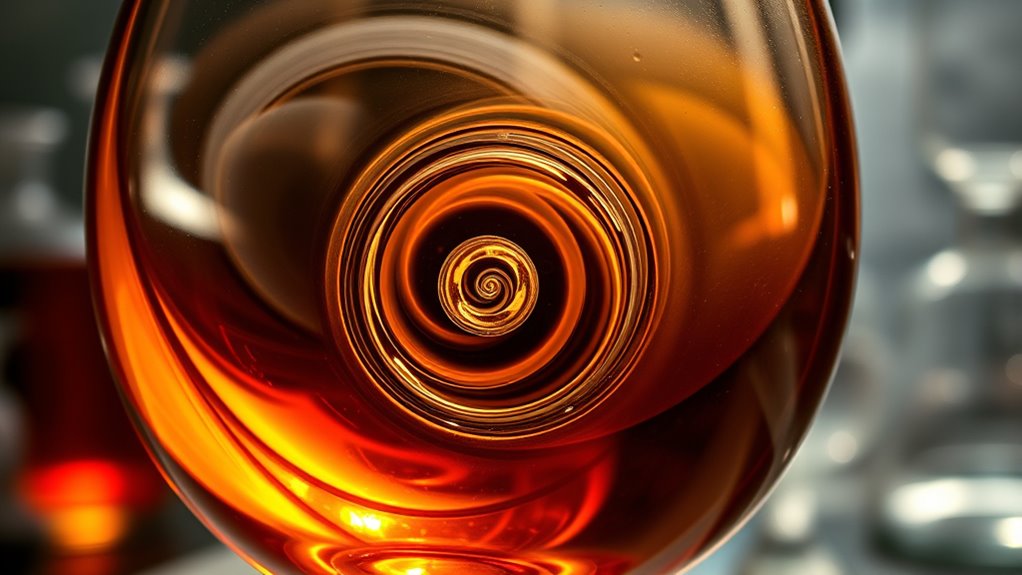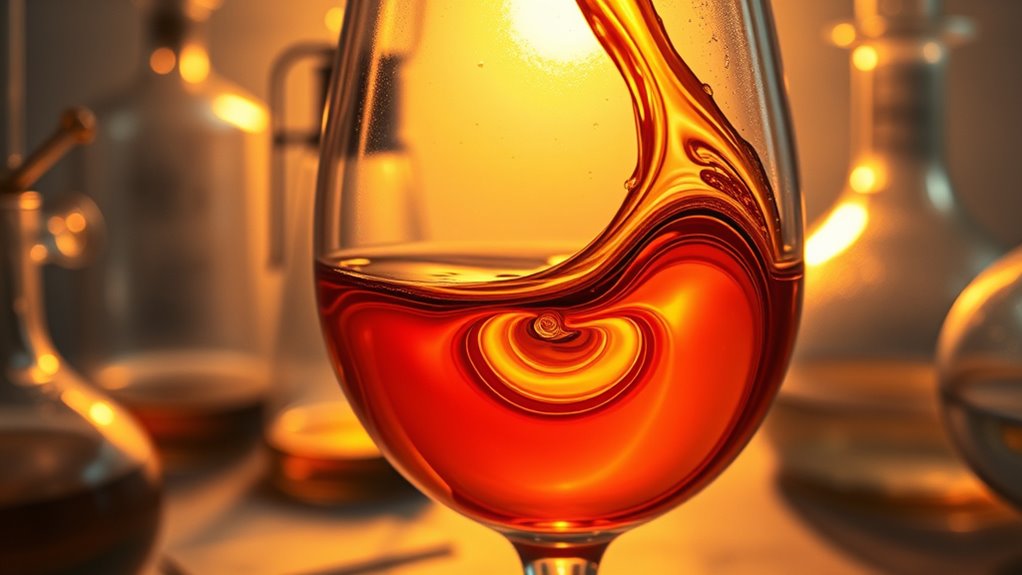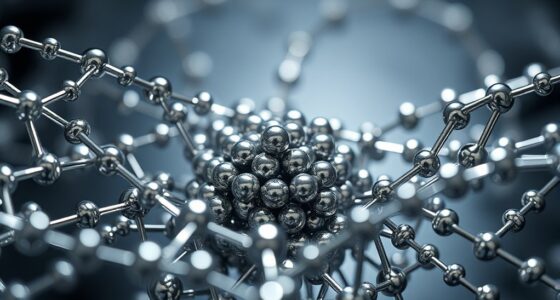Louis Pasteur’s wine-inspired discovery revealed that molecules like tartaric acid exist as mirror-image forms called enantiomers, which are like molecular “left” and “right” gloves. He examined the tartaric acid crystals from wine to show how they can be split into two distinct types, laying the foundation for understanding chirality. This breakthrough revolutionized chemistry and biology, and if you keep exploring, you’ll uncover how his work continues to influence modern science.
Key Takeaways
- Louis Pasteur’s study of tartaric acid crystals revealed molecular mirror images, leading to the concept of molecular chirality.
- His wine-related observations demonstrated how enantiomers can be distinguished by their physical and optical properties.
- Pasteur’s manual separation of enantiomers inspired the development of enantioselective synthesis techniques.
- The discovery highlighted the importance of molecular “handedness” in biological and chemical processes.
- Pasteur’s work on wine and tartaric acid is foundational to understanding and controlling chirality in chemistry.

Chasing chirality means exploring one of the most intriguing aspects of molecular science, where tiny differences can have huge impacts. It’s about understanding how molecules that appear nearly identical can behave so differently, especially when their mirror images don’t align. This concept plays a vital role in fields like pharmaceuticals, where the wrong enantiomer can cause adverse effects, or in flavors and fragrances, where one enantiomer might smell sweet while its mirror image smells sour.
At the heart of this exploration is enantioselective synthesis, a process that allows chemists to selectively produce one molecular mirror image over the other. This technique is fundamental because it enables the creation of pure, specific enantiomers needed for various applications, rather than a messy mixture that’s difficult to control. Chiral synthesis has become a cornerstone in modern chemistry, facilitating advancements across multiple industries.
When you consider enantioselective synthesis, you’re essentially controlling the way molecules form during chemical reactions, ensuring that the resulting compounds have the desired chiral shape. Imagine trying to make a pair of gloves; you need the right hand for the right glove, and this is exactly how chemists aim to produce the correct enantiomer.
The challenge lies in directing the reaction so that only one molecular mirror image forms, avoiding the formation of its counterpart. This precision is key because, in nature, enzymes and biological systems are often highly selective, recognizing only one enantiomer of a compound. This mirror-image specificity drives the importance of enantioselective synthesis in creating drugs that are effective and safe.
Your journey into chirality also involves understanding that molecules are like mirror images—similar yet distinct. These molecular mirror images, or enantiomers, can have drastically different biological activities. Chirality is a fundamental property that influences how molecules interact within biological systems and is key to understanding the significance of enantioselective synthesis.
Louis Pasteur’s groundbreaking work with tartaric acid opened the door to recognizing these differences, sparking a scientific revolution. Today, scientists continue to chase these mirror images, developing methods to synthesize and separate them efficiently.
Frequently Asked Questions
How Did Pasteur’s Discovery Influence Modern Pharmaceutical Development?
Your understanding of pharmaceutical development is deeply influenced by Pasteur’s discovery. It led to enantioselective synthesis, enabling you to produce drugs with specific chiral properties.
This breakthrough also revolutionized chiral drug design, allowing you to create more effective and safer medications by targeting precise molecular configurations. Pasteur’s work paved the way for modern chemistry’s focus on chirality, ultimately improving drug efficacy and reducing adverse effects.
Are There Other Natural Sources of Molecular Chirality Besides Wine?
You might think wine’s the only natural source of molecular chirality, but irony strikes—biological asymmetry is everywhere. You can find it in mineral structures, where crystal forms show handedness, and in nature’s own designs, like snail shells and plant molecules.
These sources reveal that chirality’s not just in wine but woven into the very fabric of life and minerals, showcasing nature’s subtle, elegant asymmetries.
What Are Current Applications of Chirality in Nanotechnology?
You can explore how chirality plays a role in nanotechnology, especially in molecular recognition and enantiomer separation. Researchers develop chiral nanostructures that selectively bind to specific enantiomers, enhancing drug delivery and sensors.
These applications improve precision in identifying molecules and separating enantiomers, making nanotech more effective. By leveraging chirality, you help advance fields like medicine, environmental science, and materials engineering, pushing the boundaries of what nanotechnology can achieve.
How Does Chirality Affect the Efficacy of Medications Today?
Did you know that about 50% of pharmaceuticals are chiral, and often only one enantiomer is effective? Chirality, or molecular mirror images, substantially influences medication efficacy.
As the wrong enantiomer can cause side effects or be inactive, ensuring enantiomeric purity helps maximize benefits and minimize risks. This makes chirality essential in drug development.
Your understanding of chirality’s role can improve medication safety and effectiveness.
Can Synthetic Methods Replicate Natural Chiral Molecules Perfectly?
You might wonder if synthetic replication can perfectly mimic natural chiral molecules. While chiral synthesis techniques have advanced considerably, achieving identical stereochemistry remains challenging.
Scientists use sophisticated methods to produce enantiomerically pure compounds, but subtle differences can still occur. So, although synthetic methods get close, they don’t always replicate natural chiral molecules perfectly.
Making perfect copies is complex, and ongoing research is essential to improve precision in chiral synthesis.
Conclusion
You now see how Louis Pasteur’s wine-inspired discovery changed chemistry forever. His work on molecular chirality is fundamental, influencing everything from pharmaceuticals to materials science. Did you know that over 80% of drugs today rely on chiral molecules to target specific biological functions? This statistic highlights just how essential Pasteur’s insights are in shaping modern science and medicine—proof that chasing chirality truly made a lasting impact on the world.









